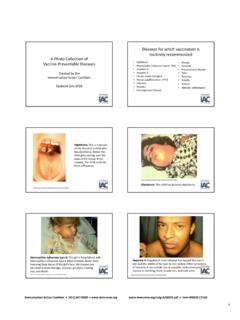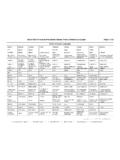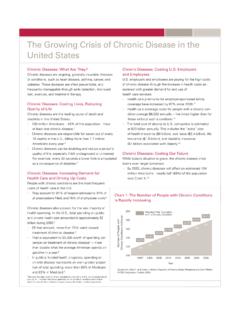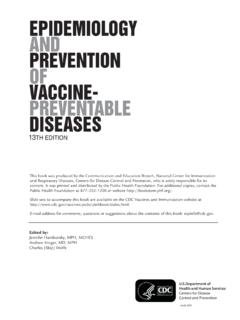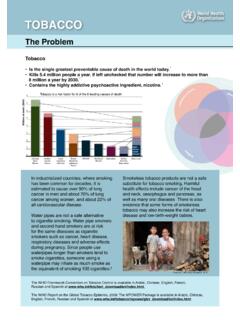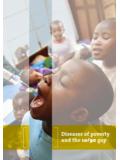Transcription of The One-Minute Cure: The Secret to Healing Virtually All ...
1 The One-Minute Cure: The Secret to Healing Virtually All Diseases by Madison Cavanaugh Sample Chapter The One-Minute Cure: The Secret to Healing Virtually All Diseases Copyright 2008 Think-Outside-the-Book Publishing, Inc. No part of this publication may be reproduced, stored in a retrieval system or transmitted in any form or by any means, electronic, mechanical, photocopying, recording or otherwise without the written permission of the publisher. Publisher: 311 N. Robertson Boulevard, Suite 323. Beverly Hills, California 90211. Printed in Canada Disclaimer: The entire contents of this book are based upon research conducted by the author, unless otherwise noted.
2 The publisher, the author, the distributors and bookstores present this information for educational purposes only. This information is not intended to diagnose or prescribe for medical or psychological conditions nor to claim to prevent, treat, mitigate or cure such conditions. The author and the publisher are not making an attempt to recommend specific products as treatment of disease , and neither do they have any financial interest in the sale of the substances described in this book. In presenting this infor- mation, no attempt is being made to provide diagnosis, care, treatment or rehabilitation of individuals, or apply medical, mental health or human develop- ment principles, to provide diagnosing, treating, operating or prescribing for any human disease , pain, injury, deformity or physical condition.
3 The information contained herein is not intended to replace a one-on-one relationship with a doctor or qualified health care professional. Therefore, the reader should be made aware that this information is not intended as medical advice, but rather a sharing of knowledge and information from the research and experience of the author. The publisher and the author encourage you to make your own health care decisions based upon your research and in partnership with a qualified health care professional. You and only you are responsible if you choose to do anything based on what you read. ~ SAMPLE CHAPTER ~. T he information you are about to read in this book will not only shock you, but also anger and excite you at the same time.
4 It will shock you because the simple therapy presented herein may be the closest thing to a panacea that you've ever encountered, and yet it has been deliberately suppressed by those who care less about protecting people's health than they do about their own financial interests. It will make you angry because you might have relatives, friends and loved ones who have suffered unnecessarily from preventable diseases, or even died, because this information has not been disseminated as vigilantly as it should have been. And lastly, it will excite you because the simple therapy which is the subject of this book may well be what its supporters call the world's greatest Healing miracle of all time.
5 If you are like most people, you probably find it hard to believe that any single therapy, substance or element could have such a far-reaching and broad spectrum efficacy when it comes to curing diseases. You have every reason to be skeptical. You might be thinking, How could anything so simple actually be the answer to all our complex health problems?'. But the fact is, simple concepts are often the most powerful ones and yet usually the most ignored. This is 1. particularly true in the health care field. Over the last seven centuries, we as a society have been programmed to regard the curing or Healing of disease as a perplexing and complicated science that is best left in the hands of medical practitioners.
6 As a result, we've come to rely almost exclu- sively on the information that is dispensed to us by doctors and health care providers who are themselves usually uninformed about alternative Healing options that may be better for treating diseases than the standard medical treatments consisting of drugs, surgery, radiation or other therapies. What you're about to learn from this book is a simple, inexpensive therapy that can be self-administered at home in less than a minute and costs about 1 cents per day. An estimated 15,000 European medical doctors, naturopaths and homeopaths have provided this powerful therapy to over 10 million people over the past 70 years to treat over 50.
7 Different diseases, but in the , it has been relatively unknown because of reasons that will become clear as you read the rest of this book. Before I reveal what that therapy is, it is necessary to present an abbreviated history of medicine and how it evolved into the overcomplicated, complex system of Healing that is practiced today. From this condensed retelling of events, one can glean that the process of curing'. disease does not have to be the expensive and often invasive procedure it presently is. There is an easier, more organic and far more effective approach to curing disease and maintaining good health one that has been obscured by 2.
8 The highly complex science (and business) of medicine and pharmaceuticals. Ever since the dawn of medicine centuries ago, mis- information about Healing has been propagated to the public through various methods. The earliest method used, especially during the Black Death in the 14th and 15th centuries, was the traditional authority' approach to science and medicine. This consisted of the idea that if a prominent person declared something to be true, then it must be so . and anything observed to the contrary was regarded as an anomaly. Centuries later, physicians like Ibn al-Nafis (regarded as the greatest physiologist of the Middle Ages') and Vesalius (founder of modern human anatomy) replaced previous doctrines and discredited many of the theories of traditional authorities' with doctrines derived from their explorations in physiology and anatomy.
9 Fast forward to the 20th century evidence-based medicine began to emerge, wherein the most effective ways of doing things (also called algorithms of practice' or best practice') were identified through scientific methods and modern global information science. The evidence was collated; standard protocols were developed, and thereafter disseminated to doctors and healthcare providers. The problem with the best practice' approach is that it served to suppress all other alternative approaches to treatment. Furthermore, the scientific methods used in drawing conclusions, although seemingly logical and unbiased (therefore, reliable), were actually flawed.
10 3. All scientific experimentation is subject to confirmation bias (or the observer-expectancy effect) to a certain extent. Confirmation bias is an unfair influence found in scientific research when a researcher expects a given result, and therefore, unconsciously manipulates an experiment in order to find that result. A researcher's particular ideology, worldview, superstitions, traditions or religion can cause him or her to assign greater weight to some data over other data. The human brain has a tendency to fill in the gaps of what it perceives, and oftentimes, a researcher may also be stubborn, unwilling to admit a mistake, or embarrassed by having to withdraw a publicly declared belief.

